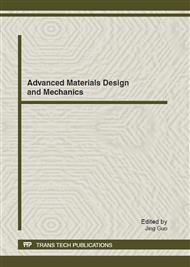p.729
p.733
p.737
p.741
p.745
p.749
p.754
p.758
p.763
Expert System of the Fiber-Optical Detection for Colon Hydropathy
Abstract:
Colon hydropathy implies that the filtrated water pumped into the rectum keeps regular colon squirm, and sweeps away poisonous excrements. The PC-based ryodoraku technique has played increasingly important role in the field of traditional Chinese medicine because of its advantages of better preventive diagnosis, less side effects and inexpensive medicare. Since the 1950’s, Dr. Nakatani Yoshio has developed the ryodoraku methodology to measure skin resistance for the purpose of preventive diagnosis based on Chinese acupuncture and the qi-field theory. From the viewpoint of the preventive medicine, rehabilitated smooth muscles and well-balanced probiotics would improve self-repair functions and reduce the carcinogen of the colon. However, long-lasting hydropathical process for existed products on the market may result in unpredictable side effects from the viewpoint of drug dynamics. On the other hand, repeated use of colonoscopes could not only be expensive but contaminative in considering of colon viruses. This paper is focused on the clinical research of the drug dynamics and the development of a PC-based technique in the colon hydropathy. A clinical platform with disposable optical fibers is schemed to assure the biomorphic balance of colon. Finally, clinical experiments are carefully schemed to justify the advantages of the proposed algorithm in Tse-En Clinic of Traditional Chinese Medicine.
Info:
Periodical:
Pages:
745-748
Citation:
Online since:
September 2012
Authors:
Keywords:
Price:
Сopyright:
© 2012 Trans Tech Publications Ltd. All Rights Reserved
Share:
Citation:


